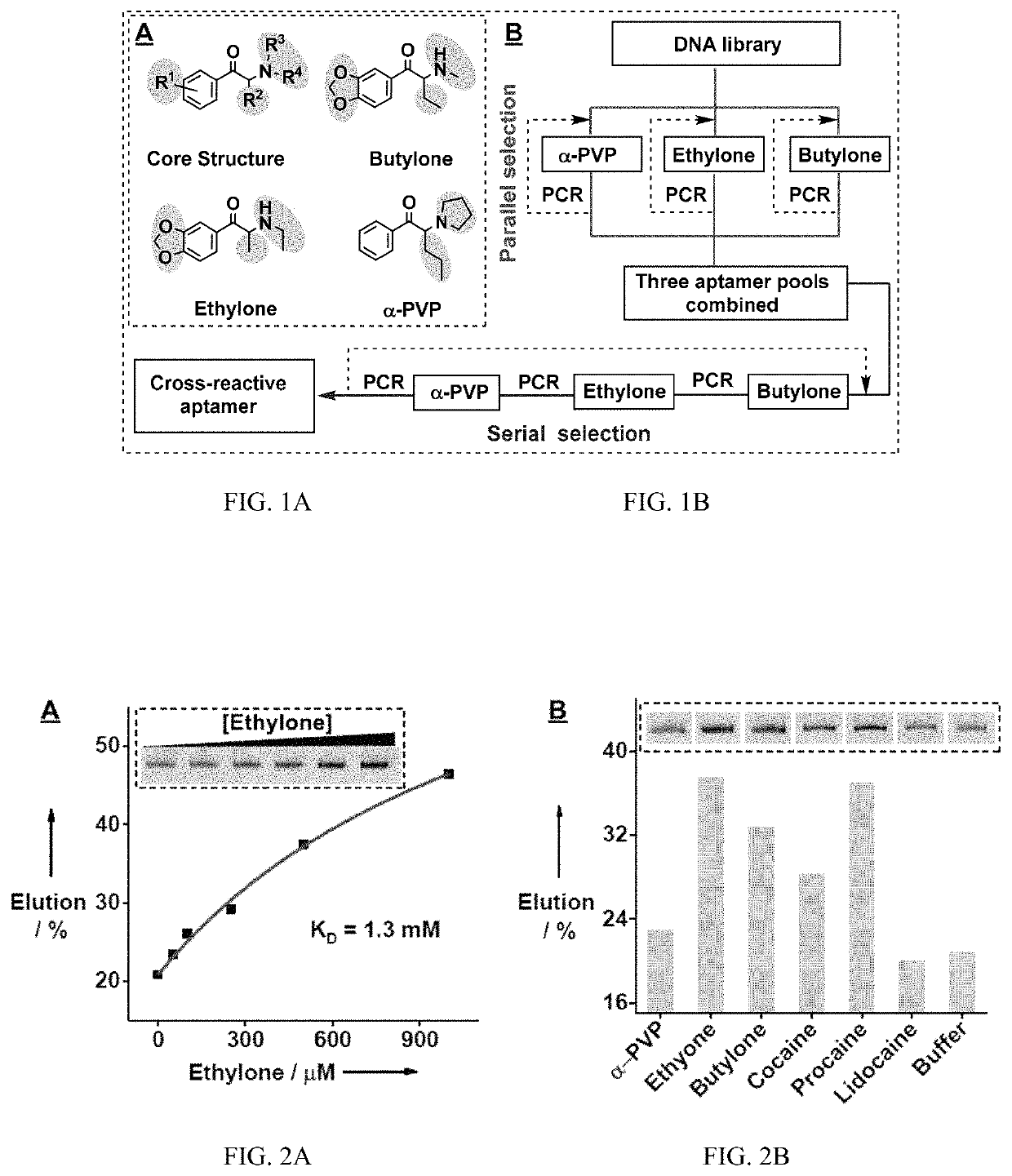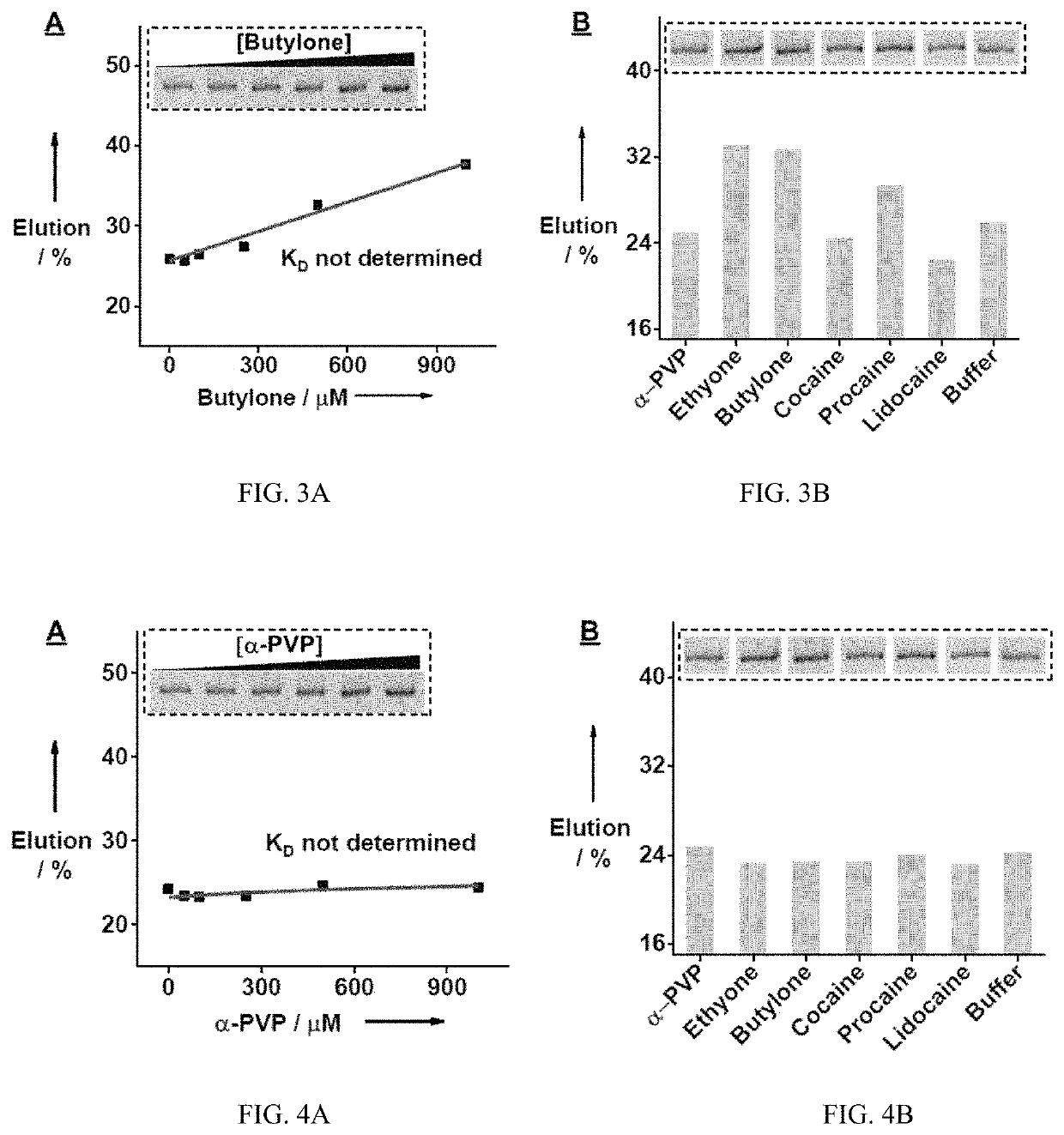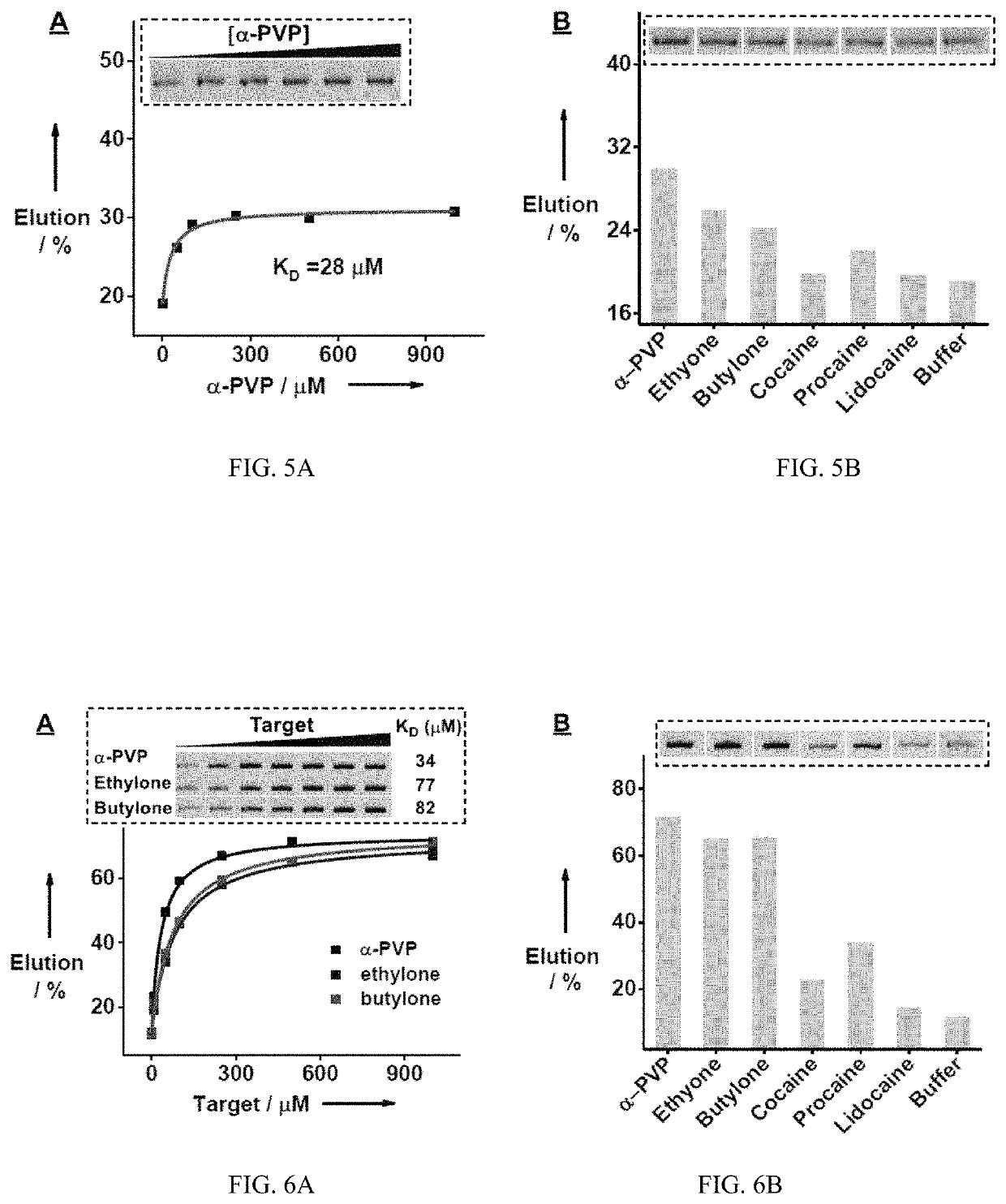Method for isolating cross-reactive aptamer and use thereof
a cross-reactive aptamer and aptamer technology, applied in the field of isolating cross-reactive aptamer and using thereof, can solve the problems of no reliable presumptive test for any synthetic cathinone, many negative health consequences, and abuse of bath salts, and achieve excellent sensor performance and rapid and sensitive detection.
- Summary
- Abstract
- Description
- Claims
- Application Information
AI Technical Summary
Benefits of technology
Problems solved by technology
Method used
Image
Examples
example 1
and-Serial SELEX Strategy to Identify Cross-Reactive Aptamers
[0228]A rationally designed ‘parallel-and-serial’ SELEX strategy was developed to isolate cross-reactive aptamers for structurally-similar compounds. The strategy has three elements that are crucial for its success. First, the targets used for SELEX are highly important, as target selection defines the core structure that is to be recognized by the isolated aptamer and also creates selection pressure for isolating aptamers that are insensitive to the identity of peripheral substituents. Thus, as many targets as needed are chosen that have variations at all desired substituent sites while having the same core molecular framework of the target family. Second, the strategy utilizes ‘parallel selection’, in which multiple aptamer pools are enriched using each individual target. Cross-reactive aptamers recognizing the shared core structure would be enriched in each of these pools, while aptamers specific to an individual target...
example 2
Detection of Synthetic Cathinones
[0240]SCA2.1 was then used for sensitive, colorimetric detection of synthetic cathinones via a diethylthiotricarbocyanine (Cy7)-displacement assay. Cy7 is a small-molecule dye that exists in equilibrium between monomer and dimer forms, which have absorbance peaks at 760 nm and 670 nm, respectively. Previous studies have shown that Cy7 monomer can bind into hydrophobic target-binding domains of aptamers, which results in a significant enhancement of absorbance at 760 nm. The binding of target to the aptamer can displace Cy7 monomer from the binding domain within seconds, which causes the dye to dimerize in aqueous solution. This results in the reduction of absorbance at 760 nm and enhancement of absorbance at 670 nm, which enables Cy7 to be used as a colorimetric indicator for small molecule detection. (FIG. 12A). Such an assay can be employed to detect synthetic cathinones using SCA2.1.
[0241]Specifically, the binding affinity of Cy7 to SCA2.1 was det...
example 3
g Structure-Switching Cross-Reactive Aptamers
[0248]SCA2.1 adopts a fully folded structure in the absence of target (FIG. 19A). Structure-switching aptamers, which undergo a target-induced conformational change upon binding, can be readily adopted into various aptamer-based sensor platforms. To successfully transform the isolated cross-reactive aptamer into a structure-switching aptamer, an exonuclease-assisted truncation method is used. This strategy involves the removal of six nucleotides from the 3′-end of SCA2.1 to generate a structure-switching aptamer SCA-SW-40 (SEQ ID NO: 18) that remains in a single-stranded state in the absence of target (FIG. 19B), but folds into a double-stranded structure in the presence of synthetic cathinone drugs (FIG. 19C).
PUM
| Property | Measurement | Unit |
|---|---|---|
| frequency | aaaaa | aaaaa |
| pH | aaaaa | aaaaa |
| molecular weight | aaaaa | aaaaa |
Abstract
Description
Claims
Application Information
 Login to View More
Login to View More - R&D
- Intellectual Property
- Life Sciences
- Materials
- Tech Scout
- Unparalleled Data Quality
- Higher Quality Content
- 60% Fewer Hallucinations
Browse by: Latest US Patents, China's latest patents, Technical Efficacy Thesaurus, Application Domain, Technology Topic, Popular Technical Reports.
© 2025 PatSnap. All rights reserved.Legal|Privacy policy|Modern Slavery Act Transparency Statement|Sitemap|About US| Contact US: help@patsnap.com



